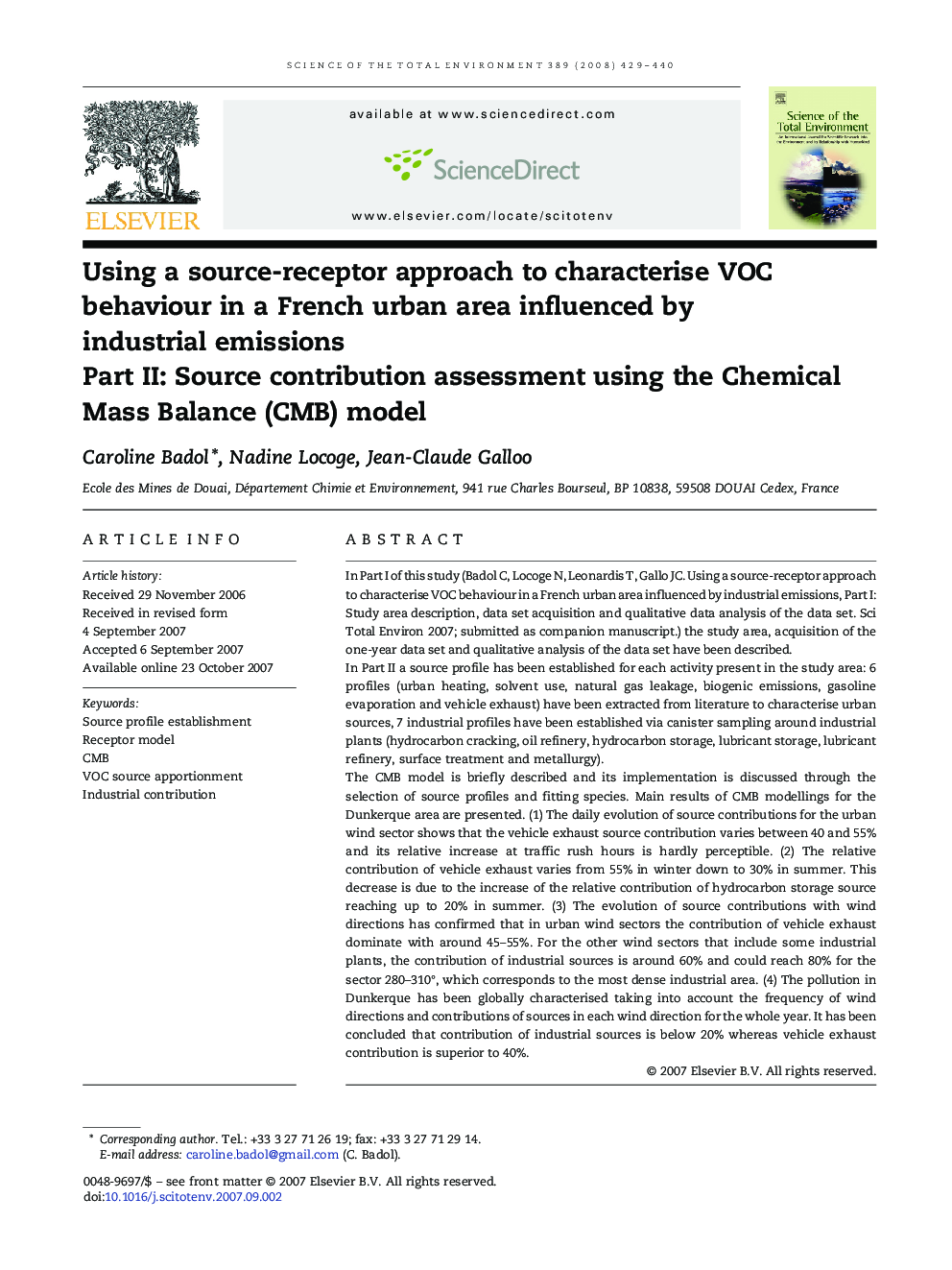| کد مقاله | کد نشریه | سال انتشار | مقاله انگلیسی | نسخه تمام متن |
|---|---|---|---|---|
| 4432726 | 1619937 | 2008 | 12 صفحه PDF | دانلود رایگان |

In Part I of this study (Badol C, Locoge N, Leonardis T, Gallo JC. Using a source-receptor approach to characterise VOC behaviour in a French urban area influenced by industrial emissions, Part I: Study area description, data set acquisition and qualitative data analysis of the data set. Sci Total Environ 2007; submitted as companion manuscript.) the study area, acquisition of the one-year data set and qualitative analysis of the data set have been described.In Part II a source profile has been established for each activity present in the study area: 6 profiles (urban heating, solvent use, natural gas leakage, biogenic emissions, gasoline evaporation and vehicle exhaust) have been extracted from literature to characterise urban sources, 7 industrial profiles have been established via canister sampling around industrial plants (hydrocarbon cracking, oil refinery, hydrocarbon storage, lubricant storage, lubricant refinery, surface treatment and metallurgy).The CMB model is briefly described and its implementation is discussed through the selection of source profiles and fitting species. Main results of CMB modellings for the Dunkerque area are presented. (1) The daily evolution of source contributions for the urban wind sector shows that the vehicle exhaust source contribution varies between 40 and 55% and its relative increase at traffic rush hours is hardly perceptible. (2) The relative contribution of vehicle exhaust varies from 55% in winter down to 30% in summer. This decrease is due to the increase of the relative contribution of hydrocarbon storage source reaching up to 20% in summer. (3) The evolution of source contributions with wind directions has confirmed that in urban wind sectors the contribution of vehicle exhaust dominate with around 45–55%. For the other wind sectors that include some industrial plants, the contribution of industrial sources is around 60% and could reach 80% for the sector 280–310°, which corresponds to the most dense industrial area. (4) The pollution in Dunkerque has been globally characterised taking into account the frequency of wind directions and contributions of sources in each wind direction for the whole year. It has been concluded that contribution of industrial sources is below 20% whereas vehicle exhaust contribution is superior to 40%.
Journal: Science of The Total Environment - Volume 389, Issues 2–3, 25 January 2008, Pages 429–440